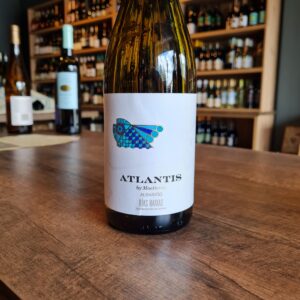-
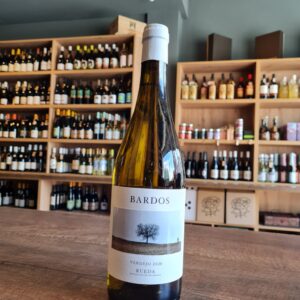 Bardos Verdejo is a wine made from 100% Verdejo from vineyards that are 20-25 years old, located in Rueda, at more than 700 metres of altitude on stony soils. The harvest is carried out at night, at temperatures below 15ºC. The fermentation is done with local yeasts at a controlled temperature and the wine rests on its lees for at least 4 months, gaining complexity and texture. On the nose, the intense aromas of fruit such as white peach combine with cut grass, citrus, balsamic and mineral notes. In the mouth it has a good volume and persistence, well integrated acidity and a characteristic aniseed aftertaste, typical of the grape. Really a high quality example of this native Spanish variety. Excellent with light bites, starters, salads and white fish. All of the wines by De Bardos are crafted by hand in a fully artisan manner.
Bardos Verdejo is a wine made from 100% Verdejo from vineyards that are 20-25 years old, located in Rueda, at more than 700 metres of altitude on stony soils. The harvest is carried out at night, at temperatures below 15ºC. The fermentation is done with local yeasts at a controlled temperature and the wine rests on its lees for at least 4 months, gaining complexity and texture. On the nose, the intense aromas of fruit such as white peach combine with cut grass, citrus, balsamic and mineral notes. In the mouth it has a good volume and persistence, well integrated acidity and a characteristic aniseed aftertaste, typical of the grape. Really a high quality example of this native Spanish variety. Excellent with light bites, starters, salads and white fish. All of the wines by De Bardos are crafted by hand in a fully artisan manner. -
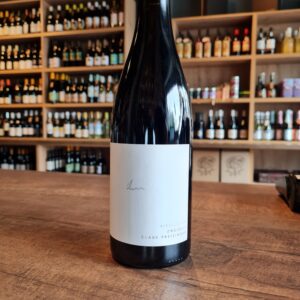 Claus Preisinger has honed his skills around the world, working in vineyards in California, before returning to his Austrian roots to work for Anita and Hans Nittnaus. After branching out on his own, he has kept the respectful and honest winemaking he learned there, and is applying it a stone's throw away in the town of Gols. His "Kieselstein" Zweigelt is one of the most immediately enjoyable wines that I have had the opportunity to drink as of late. This beautifully pure Zweigelt was fermented in neutral barrels with a touch of sulphur added at bottling. Claus Preisinger has been using ambient yeasts since 2002 as well as little to no sulfites. The Preisinger wines are certified biodynamic, which Claus takes very seriously. His commitment to the environment and non-interventional winemaking shines through in the superior wines he produces. Super fresh and juicy. Can be served chilled.
Claus Preisinger has honed his skills around the world, working in vineyards in California, before returning to his Austrian roots to work for Anita and Hans Nittnaus. After branching out on his own, he has kept the respectful and honest winemaking he learned there, and is applying it a stone's throw away in the town of Gols. His "Kieselstein" Zweigelt is one of the most immediately enjoyable wines that I have had the opportunity to drink as of late. This beautifully pure Zweigelt was fermented in neutral barrels with a touch of sulphur added at bottling. Claus Preisinger has been using ambient yeasts since 2002 as well as little to no sulfites. The Preisinger wines are certified biodynamic, which Claus takes very seriously. His commitment to the environment and non-interventional winemaking shines through in the superior wines he produces. Super fresh and juicy. Can be served chilled. -
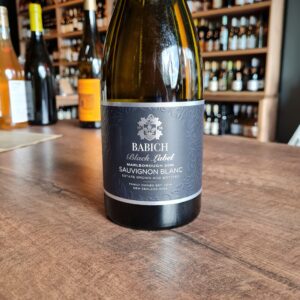 The Babich family hails from Croatia and first bought land in New Zealand in 1916. The winery is now in its third generation. Fruit for this wine comes from a variety of its estate-owned vineyards which are sustainable or organic. Most of the juice for this wine is fermented in stainless steel with a small percentage in old oak. Crafted with food in mind-weighty, ripe, tropical fruit, flavoured style, rich and rounded. Pair it with veal, seafood (oysters) or a chicken dish.
The Babich family hails from Croatia and first bought land in New Zealand in 1916. The winery is now in its third generation. Fruit for this wine comes from a variety of its estate-owned vineyards which are sustainable or organic. Most of the juice for this wine is fermented in stainless steel with a small percentage in old oak. Crafted with food in mind-weighty, ripe, tropical fruit, flavoured style, rich and rounded. Pair it with veal, seafood (oysters) or a chicken dish. -
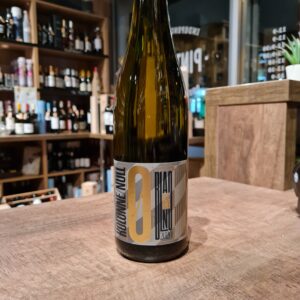 With admirable precision and innovative ideas, the family-run winery Pauly, now in its 3rd generation, succeeds in producing stylish wines with an outstanding character of their own. The winery is not only known for its famous steep slope on the Niederberg-Helden on the Mosel River, but also for the unique slate minerality that gives the wines an elegant, fresh style. The alcohol-free Riesling from Kolonne Null is perfect for all wine enthusiasts who like as little residual sweetness in their wine as possible. Best enjoyed very well chilled at 5 - 7°C. It is perfect as an accompaniment to stir-fried vegetables with fish, omelette with salmon and fennel or vegetable salad with beetroot.
With admirable precision and innovative ideas, the family-run winery Pauly, now in its 3rd generation, succeeds in producing stylish wines with an outstanding character of their own. The winery is not only known for its famous steep slope on the Niederberg-Helden on the Mosel River, but also for the unique slate minerality that gives the wines an elegant, fresh style. The alcohol-free Riesling from Kolonne Null is perfect for all wine enthusiasts who like as little residual sweetness in their wine as possible. Best enjoyed very well chilled at 5 - 7°C. It is perfect as an accompaniment to stir-fried vegetables with fish, omelette with salmon and fennel or vegetable salad with beetroot. -
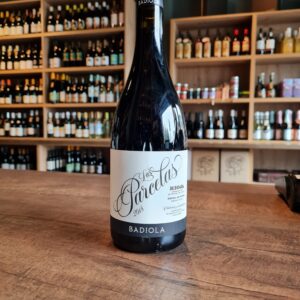 Bodega Badiola, was founded in 2018, part of the Peninsula Vinicultore Group when they bought an old company in the in Rioja Alavesa, the Basque region in the east and south east of Rioja. Their vineyards are situated on the slopes of the Sierra Cantabria, mostly tiny parcels the average size being only 0.3 hectares with an average vine age of 50 years but some of the vines are obviously significantly older. With respect for the environment, minimal spraying of copper and sulphur only are used, so all but Organic. The Las Parcelas comes from 300 carefully selected parcels of old bush Tempranillo vines planted in limestone soils, resulting in elegant wines that are fresh and age worthy due to the balancing acidity. The winemaking philosophy is to keep that purity and freshness by careful use of oak, giving a real point of difference to the traditional oaky Riojas. On the nose and palate, the fruit is very much to the fore with cherry and blackberry fruit with hints of spice and with fresh acidity and almost chalky tannins from that limestone soils. Though it is still young give it some air and it really blossoms, drinking significantly better at dinner rather than lunch when first opened, so will keep well too.
Bodega Badiola, was founded in 2018, part of the Peninsula Vinicultore Group when they bought an old company in the in Rioja Alavesa, the Basque region in the east and south east of Rioja. Their vineyards are situated on the slopes of the Sierra Cantabria, mostly tiny parcels the average size being only 0.3 hectares with an average vine age of 50 years but some of the vines are obviously significantly older. With respect for the environment, minimal spraying of copper and sulphur only are used, so all but Organic. The Las Parcelas comes from 300 carefully selected parcels of old bush Tempranillo vines planted in limestone soils, resulting in elegant wines that are fresh and age worthy due to the balancing acidity. The winemaking philosophy is to keep that purity and freshness by careful use of oak, giving a real point of difference to the traditional oaky Riojas. On the nose and palate, the fruit is very much to the fore with cherry and blackberry fruit with hints of spice and with fresh acidity and almost chalky tannins from that limestone soils. Though it is still young give it some air and it really blossoms, drinking significantly better at dinner rather than lunch when first opened, so will keep well too. -
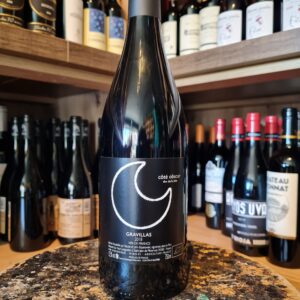 A typical blend of almost century-old Carignan and Cabernet Sauvignon. The vineyard is treated with respect, neither chemicals nor weed killers are tolerated, in order to preserve the biodiversity of the surrounding flora and fauna. The favourable terroir of white limestone pebbles, combined with low yields, gives mineral wines, with a beautiful freshness , and concentrated fruit. Manual harvest in 15 kg crates with severe sorting in the vineyard. 3 weeks pellicular maceration which brings a lot of fullness. We will find the aromatic complexity of Carignan with some notes of pepper and a tannic structure provided by the Cabernet. the tannins are nevertheless very fine. Pair this Coté Obscur wine with beef entrecote, duck skewer and some soft cheese. A real treat! Would recommend to decant this for at least an hour.
A typical blend of almost century-old Carignan and Cabernet Sauvignon. The vineyard is treated with respect, neither chemicals nor weed killers are tolerated, in order to preserve the biodiversity of the surrounding flora and fauna. The favourable terroir of white limestone pebbles, combined with low yields, gives mineral wines, with a beautiful freshness , and concentrated fruit. Manual harvest in 15 kg crates with severe sorting in the vineyard. 3 weeks pellicular maceration which brings a lot of fullness. We will find the aromatic complexity of Carignan with some notes of pepper and a tannic structure provided by the Cabernet. the tannins are nevertheless very fine. Pair this Coté Obscur wine with beef entrecote, duck skewer and some soft cheese. A real treat! Would recommend to decant this for at least an hour. -
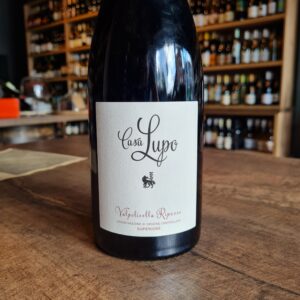 Great Ripasso wine here, any wine enthusiasts will see it as an honest to the point wine on it's Ripasso process. Otherwise known as a ‘Baby Amarone’. The term “Ripasso” means “repassed” referring to the production process whereby regular, fermented Valpolicella (which is a blend of three regional native red grape varieties – Corvina, Rondinella and occasionally Molinara) is added to a cask containing the skins and lees left over from recently fermented Amarone wines. The process of adding (or “repassing”) the lighter Valpolicella wine over the remainders of the “bigger” Amarone wine imparts additional color, texture and flavor to the Valpolicella wine. The “Appassimento” process is an ancient wine making technique used in Northern Italy to make Amarone – the Daddy of Italian wine and its by product Recioto della Valpolicella (a sweet red wine). Grapes are air dried on racks for a period of at least a couple of months and often as many as six, before being pressed. Also, it induces a second fermentation of the wine that increases the wine’s alcoholic content. The end result is a wine that retains the vibrancy of Valpolicella but is darker in colour, bigger and more flavourful and complex than the original Valpolicella. Ripasso wines are rich, full-bodied and share some of the same aroma and flavor profiles as Amarone wines, just less so. Since Ripasso wines are more approachable and less expensive than Amarones they can be enjoyed more regularly. The land is at an altitude of 450 meters above the see level and the soil is made by the alteration of calcareous-fossilized formations, in particular the red flake and biancone marble.After harvesting by hand, the Valpolicella, before aging, is macerated a second time on the mark of the Amarone just drawn and left to rest for about 15-20 days. Then a maturation in oak barrels of 500/1000 LT for 18 months takes place. Ageing in bottles follows that lasts until optimal maturity. It matches perfectly with mushroom risotto, red meat such as barbecue steak or white meat such as stewed rabbit, perfect with cheese of medium maturing.
Great Ripasso wine here, any wine enthusiasts will see it as an honest to the point wine on it's Ripasso process. Otherwise known as a ‘Baby Amarone’. The term “Ripasso” means “repassed” referring to the production process whereby regular, fermented Valpolicella (which is a blend of three regional native red grape varieties – Corvina, Rondinella and occasionally Molinara) is added to a cask containing the skins and lees left over from recently fermented Amarone wines. The process of adding (or “repassing”) the lighter Valpolicella wine over the remainders of the “bigger” Amarone wine imparts additional color, texture and flavor to the Valpolicella wine. The “Appassimento” process is an ancient wine making technique used in Northern Italy to make Amarone – the Daddy of Italian wine and its by product Recioto della Valpolicella (a sweet red wine). Grapes are air dried on racks for a period of at least a couple of months and often as many as six, before being pressed. Also, it induces a second fermentation of the wine that increases the wine’s alcoholic content. The end result is a wine that retains the vibrancy of Valpolicella but is darker in colour, bigger and more flavourful and complex than the original Valpolicella. Ripasso wines are rich, full-bodied and share some of the same aroma and flavor profiles as Amarone wines, just less so. Since Ripasso wines are more approachable and less expensive than Amarones they can be enjoyed more regularly. The land is at an altitude of 450 meters above the see level and the soil is made by the alteration of calcareous-fossilized formations, in particular the red flake and biancone marble.After harvesting by hand, the Valpolicella, before aging, is macerated a second time on the mark of the Amarone just drawn and left to rest for about 15-20 days. Then a maturation in oak barrels of 500/1000 LT for 18 months takes place. Ageing in bottles follows that lasts until optimal maturity. It matches perfectly with mushroom risotto, red meat such as barbecue steak or white meat such as stewed rabbit, perfect with cheese of medium maturing. -
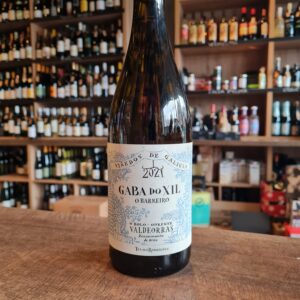 This slinky, mineral white hails from Valdeorras (“Valley of Gold”) in eastern Galicia, a region once famous for goldmining and now best known for its unique and complex wines made from the indigenous Godello grape. The wine is named for the river Sil that flows through the region (Xil is its ancient name, used by the Celtic people who once inhabited the area). Many of the river’s tributaries are flanked on either side by vineyards, planted in terraces on steep slate hillsides. The label displays a dozen bridges, symbolizing the idea of crossing from one vineyard plot to another. Gaba do Xil Godello is produced partially from grapes that are partially estate-grown and partially sourced from long-term suppliers. They come from 4 plots (O Val Grande, O Rasedo, A Torgueira, and O Valverde) located near the Bibei tributary, close to the town of Santa Cruz. Dotted with chestnut trees mixed with rockrose, the old granitic terraces barely have enough space to squeeze in the odd row of vines, following the folds of the mountains that plunge into the river. The vines grow in shallow, stony granite soils on terraces facing south, west and northwest. These coarse soils are low fertility and have low water retention capacity, forcing the vines to struggle and limiting yields. This Godello, is unoaked, gentle, restrained and precise which is dry and soft with a touch of godello's distinctive minerally citrus fruit, absoloutly perfect with light sea food dishes. Excellent value
This slinky, mineral white hails from Valdeorras (“Valley of Gold”) in eastern Galicia, a region once famous for goldmining and now best known for its unique and complex wines made from the indigenous Godello grape. The wine is named for the river Sil that flows through the region (Xil is its ancient name, used by the Celtic people who once inhabited the area). Many of the river’s tributaries are flanked on either side by vineyards, planted in terraces on steep slate hillsides. The label displays a dozen bridges, symbolizing the idea of crossing from one vineyard plot to another. Gaba do Xil Godello is produced partially from grapes that are partially estate-grown and partially sourced from long-term suppliers. They come from 4 plots (O Val Grande, O Rasedo, A Torgueira, and O Valverde) located near the Bibei tributary, close to the town of Santa Cruz. Dotted with chestnut trees mixed with rockrose, the old granitic terraces barely have enough space to squeeze in the odd row of vines, following the folds of the mountains that plunge into the river. The vines grow in shallow, stony granite soils on terraces facing south, west and northwest. These coarse soils are low fertility and have low water retention capacity, forcing the vines to struggle and limiting yields. This Godello, is unoaked, gentle, restrained and precise which is dry and soft with a touch of godello's distinctive minerally citrus fruit, absoloutly perfect with light sea food dishes. Excellent value -
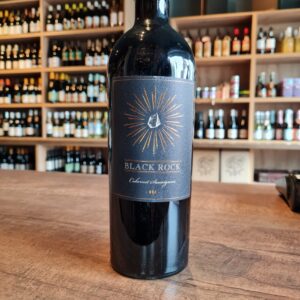 Black Rock is part of the Bronco Wine Company, which was formed in 1973 by Fred, Joseph and John Franzia. Since the start, they have been clear that the goal is to make wines for consumption, rather than for storage. At the same time, the quality must be as high as possible, at the lowest possible price. The name Bronco is a merger of brother and cousin after the brothers Fred and Joseph and their cousin John. Great aromas of red berries and fruit, with a touch of herbaceousness. Full-bodied, with healthy fruit tones, well-balanced tannins and a subtle hint of oak. Serve around 16-18 ° C as a perfect complement to grilled lamb chops, or to dishes on game or beef. Also nice for a cheese platter, with not too strong cheeses.
Black Rock is part of the Bronco Wine Company, which was formed in 1973 by Fred, Joseph and John Franzia. Since the start, they have been clear that the goal is to make wines for consumption, rather than for storage. At the same time, the quality must be as high as possible, at the lowest possible price. The name Bronco is a merger of brother and cousin after the brothers Fred and Joseph and their cousin John. Great aromas of red berries and fruit, with a touch of herbaceousness. Full-bodied, with healthy fruit tones, well-balanced tannins and a subtle hint of oak. Serve around 16-18 ° C as a perfect complement to grilled lamb chops, or to dishes on game or beef. Also nice for a cheese platter, with not too strong cheeses. -
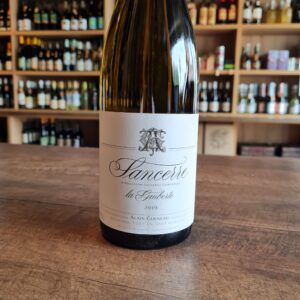 Stone fruit - check! Mineral - check! Floral - check! This wine is definitely ticking off all the right boxes! The minerality of saline and limestone sit on the tip of the tongue and linger through the entire taste. Light bodied, dry, moderate acidity, and a slightly exaggerated finish noted with blanched almonds and lemon rind bring the sip to an end. Time for another! An instant classic from a classic region! The Alain Gueneau Sancerre "La Guiberte" comes from a small family-owned estate at the Eastern end of France's Loire valley. You'll still find the grape's signature citrus freshness and a slight grassiness, but examples from Sancerre lean more towards restraint, minerality, and elegance. The secret is not only in Northern France's cooler climate, but also in the region's soil — a swathe of ancient clay-calcareous deposits that stretches from England's famous white cliffs of Dover across the channel and into Northern France. Alain and daughter Elisa are the 2nd and 3rd-generation of the Gueneau family to farm this land, three quarters of which is planted to Sauvignon Blanc vines with an average age of about 25 years. Enjoy this delicious, refreshing bottle (well chilled, of course!) now or over the next 3 years.
Stone fruit - check! Mineral - check! Floral - check! This wine is definitely ticking off all the right boxes! The minerality of saline and limestone sit on the tip of the tongue and linger through the entire taste. Light bodied, dry, moderate acidity, and a slightly exaggerated finish noted with blanched almonds and lemon rind bring the sip to an end. Time for another! An instant classic from a classic region! The Alain Gueneau Sancerre "La Guiberte" comes from a small family-owned estate at the Eastern end of France's Loire valley. You'll still find the grape's signature citrus freshness and a slight grassiness, but examples from Sancerre lean more towards restraint, minerality, and elegance. The secret is not only in Northern France's cooler climate, but also in the region's soil — a swathe of ancient clay-calcareous deposits that stretches from England's famous white cliffs of Dover across the channel and into Northern France. Alain and daughter Elisa are the 2nd and 3rd-generation of the Gueneau family to farm this land, three quarters of which is planted to Sauvignon Blanc vines with an average age of about 25 years. Enjoy this delicious, refreshing bottle (well chilled, of course!) now or over the next 3 years. -
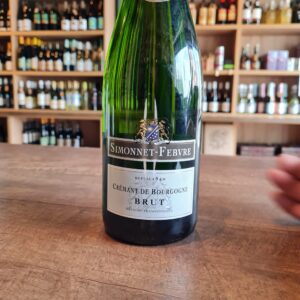 Simmonet-Febvre has been producing its wines with traditional methods since 1840. It is the only Maison in Chablis to produce Crémants of Burgundy. A harmoniously balanced wine with fine bubbles, a persistent foam and a wonderful length in the mouth. It is fresh and powerful on the nose with aromas of citrus. Drink this crémant as a chilled aperitif, as it comes or with a liqueur such as crème de cassis, and why not even drink it throughout a whole meal.
Simmonet-Febvre has been producing its wines with traditional methods since 1840. It is the only Maison in Chablis to produce Crémants of Burgundy. A harmoniously balanced wine with fine bubbles, a persistent foam and a wonderful length in the mouth. It is fresh and powerful on the nose with aromas of citrus. Drink this crémant as a chilled aperitif, as it comes or with a liqueur such as crème de cassis, and why not even drink it throughout a whole meal. -
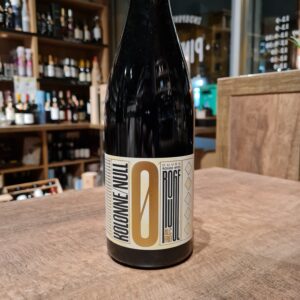 In the middle of the Spanish plateau "Meseta de Ocana" not far from Toledo, three friends founded their own winery in 1999: Margarita Madrigal, Alexandra Schmedes and Gonzalo Rodriguez. The revival of regional traditions became the basis of their way of working, which is characterized by the ecological cultivation of 35 hectares of native grape varieties and the extremely continental climate. Together with Alexandra, the first Spanish red wine, Cuvée Rouge No.2, was developed. This velvety, grippy taste makes it a must-drink on a barbecue evening, with risotto and pasta. The perfect non-alcoholic red wine for all those who love it wild and unbridled. Bring your Spain vacation home!
In the middle of the Spanish plateau "Meseta de Ocana" not far from Toledo, three friends founded their own winery in 1999: Margarita Madrigal, Alexandra Schmedes and Gonzalo Rodriguez. The revival of regional traditions became the basis of their way of working, which is characterized by the ecological cultivation of 35 hectares of native grape varieties and the extremely continental climate. Together with Alexandra, the first Spanish red wine, Cuvée Rouge No.2, was developed. This velvety, grippy taste makes it a must-drink on a barbecue evening, with risotto and pasta. The perfect non-alcoholic red wine for all those who love it wild and unbridled. Bring your Spain vacation home! -
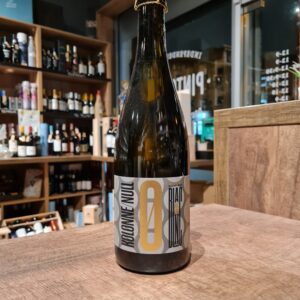 Delicious alcohol-free sparkling wine from Kolonne Null, made in Germany. The Freiherr von Gleichenstein winery has been synonymous with quality, professionalism and passion for almost 400 years. The wines remain recognizable by the distinctive flint minerality of the Kaiserstuhl. Well-coordinated team, complex high-end wines and long-lasting relationships are hallmarks of the South Baden winery culture. Excellent as an aperitif or as an accompaniment to fine canapes, seafood, fresh desserts such as zabaglione and panna cotta with fruits.
Delicious alcohol-free sparkling wine from Kolonne Null, made in Germany. The Freiherr von Gleichenstein winery has been synonymous with quality, professionalism and passion for almost 400 years. The wines remain recognizable by the distinctive flint minerality of the Kaiserstuhl. Well-coordinated team, complex high-end wines and long-lasting relationships are hallmarks of the South Baden winery culture. Excellent as an aperitif or as an accompaniment to fine canapes, seafood, fresh desserts such as zabaglione and panna cotta with fruits. -
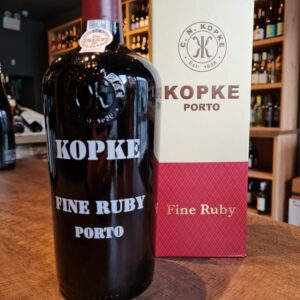 There are special places in the world. Kopke found one of them. Quinta de São Luiz is located on the left bank of the river Douro, near Pinhão, in the parish of Tabuaço. It is an imposing estate, considered one of the most emblematic of the Douro region. The Quinta has gone through two major changes: on the one hand, the construction of the Bagaúste dam, with the consequent rise of the water level and the loss of vineyard land; on the other, the enlargement of the total area with the acquisition of several other properties in the area. The estate is made up of 125 hectares, 90 of which are planted with vines. The main grape varieties grown here are Touriga Nacional, Touriga Franca, Tinta Roriz, Tinta Cão. There are also small plots of Tinta Barroca and Souzão. The vines are classified as A, the highest grade in the Demarcated Region of the Douro.
There are special places in the world. Kopke found one of them. Quinta de São Luiz is located on the left bank of the river Douro, near Pinhão, in the parish of Tabuaço. It is an imposing estate, considered one of the most emblematic of the Douro region. The Quinta has gone through two major changes: on the one hand, the construction of the Bagaúste dam, with the consequent rise of the water level and the loss of vineyard land; on the other, the enlargement of the total area with the acquisition of several other properties in the area. The estate is made up of 125 hectares, 90 of which are planted with vines. The main grape varieties grown here are Touriga Nacional, Touriga Franca, Tinta Roriz, Tinta Cão. There are also small plots of Tinta Barroca and Souzão. The vines are classified as A, the highest grade in the Demarcated Region of the Douro. -
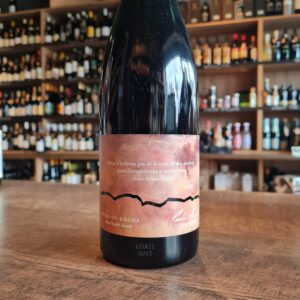 Vincent Rochette comes from a long line of grape growers rather than winemakers. In 1998, he bucked that trend by investing in a cellar and the necessary equipment to allow him to vinify his own grapes, which for five generations had been sold to other winemakers in the area. Vincent is an ardent believer in the benefits of biodynamics, fully converting his estate to follow that philosophy in 2006. He uses only natural products in the vineyard and carries out all his work in keeping with the cosmic cycles of the earth, not only among the vines but also in the cellar. One of his most interesting cuvées is the Côte du Rhone ‘Nature’, which has had no sulphites added at any stage of the winemaking process. Due to the fact that sulphites are naturally present in grapes, there are still 9mg present (below the legal 10mg limit which is required to state that the wine contains sulphites). The result is a wine that is simply a pure expression of Grenache and Syrah. Harvesting, racking and bottling are all carried out in accordance with cosmic rhythms. A delicious wine to consume today, with grills, summer salads, spicy dishes such as couscous, a tagine with candied fruits (apricots, lemons, onions, etc.)
Vincent Rochette comes from a long line of grape growers rather than winemakers. In 1998, he bucked that trend by investing in a cellar and the necessary equipment to allow him to vinify his own grapes, which for five generations had been sold to other winemakers in the area. Vincent is an ardent believer in the benefits of biodynamics, fully converting his estate to follow that philosophy in 2006. He uses only natural products in the vineyard and carries out all his work in keeping with the cosmic cycles of the earth, not only among the vines but also in the cellar. One of his most interesting cuvées is the Côte du Rhone ‘Nature’, which has had no sulphites added at any stage of the winemaking process. Due to the fact that sulphites are naturally present in grapes, there are still 9mg present (below the legal 10mg limit which is required to state that the wine contains sulphites). The result is a wine that is simply a pure expression of Grenache and Syrah. Harvesting, racking and bottling are all carried out in accordance with cosmic rhythms. A delicious wine to consume today, with grills, summer salads, spicy dishes such as couscous, a tagine with candied fruits (apricots, lemons, onions, etc.) -
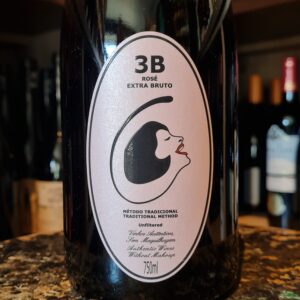 The Filipa Pato 3B Sparkling Rosé is a delicious treat of a wine from one of my favorite winemakers in Portugal. Filipa Pato is the daughter of arguably one of Portugal's most famous winemakers, Luis Pato. Passion for the traditional indigenous grape varietals of Bairrada led Filipa Pato to start her own project in 2001. She works a total of 12 hectares of vineyards scattered in various plots throughout the Bairrada appellation of Portugal. Utilizing biodynamic farming practices and minimal-intervention winemaking. The 3B is a homage to the traditional sparkling wines of Bairrada, with this being a blend of the indigenous Baga and Bical grapes. The Bical adds mineral and citrus notes to the berry red fruit notes of the Baga. This is a great little sparkler with a dry finish. Filipa and her husband, Belgian sommelier and restaurateur William Wouters, produce vinhos autênticos sem maquilagem – 'Authentic Wines Without Makeup.' 3B's-Bairrada, Baga & Bical
The Filipa Pato 3B Sparkling Rosé is a delicious treat of a wine from one of my favorite winemakers in Portugal. Filipa Pato is the daughter of arguably one of Portugal's most famous winemakers, Luis Pato. Passion for the traditional indigenous grape varietals of Bairrada led Filipa Pato to start her own project in 2001. She works a total of 12 hectares of vineyards scattered in various plots throughout the Bairrada appellation of Portugal. Utilizing biodynamic farming practices and minimal-intervention winemaking. The 3B is a homage to the traditional sparkling wines of Bairrada, with this being a blend of the indigenous Baga and Bical grapes. The Bical adds mineral and citrus notes to the berry red fruit notes of the Baga. This is a great little sparkler with a dry finish. Filipa and her husband, Belgian sommelier and restaurateur William Wouters, produce vinhos autênticos sem maquilagem – 'Authentic Wines Without Makeup.' 3B's-Bairrada, Baga & Bical -
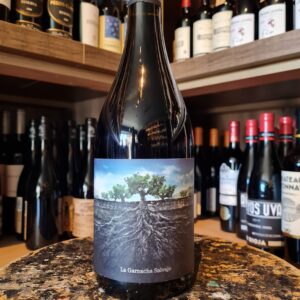 There's a lovely off the beaten track mountain wilderness (salvaje means wild) to this old-vine Garnacha (aka Grenache), one of six under the the creative Vintae's Proyecto Garnachas banner that showcase the grape variety from old vineyards in different areas of the Ebro Valley in northeast Spain. Like Gamay and Zinfandel, the old vines of Grenache are a timeless wonder. They are the Clint Eastwood of vitis vinifera: gnarled by age with a tough-as-nails exterior and no sign of retirement on the horizon. What they lack in quantity, they make up for in quality: grape clusters from old-vine Grenache (think 60-100 years old) can create wines of supple fruit, spicy character and rocket-fueled energy. This one is no exception, the Salvaje vineyards lie on rocky soils at 820m above sea level, on the north face of the Moncayo massif mountain chain, where Navarra and Aragón meet and the Atlantic influence brings mouthwatering freshness and clarity to the generous raspberry, wild herb and pepper flavours this wine induces. It doesn't need food, but it's very accommodating: spot on with roast peppers, aubergine, tomatoes and onions and with spicy sausages such as chorizo. It would be equally good with roast root vegetables, slow-roast lamb or pork, baked spiced duck legs or a ham joint and would make a good barbecue all-rounder.
There's a lovely off the beaten track mountain wilderness (salvaje means wild) to this old-vine Garnacha (aka Grenache), one of six under the the creative Vintae's Proyecto Garnachas banner that showcase the grape variety from old vineyards in different areas of the Ebro Valley in northeast Spain. Like Gamay and Zinfandel, the old vines of Grenache are a timeless wonder. They are the Clint Eastwood of vitis vinifera: gnarled by age with a tough-as-nails exterior and no sign of retirement on the horizon. What they lack in quantity, they make up for in quality: grape clusters from old-vine Grenache (think 60-100 years old) can create wines of supple fruit, spicy character and rocket-fueled energy. This one is no exception, the Salvaje vineyards lie on rocky soils at 820m above sea level, on the north face of the Moncayo massif mountain chain, where Navarra and Aragón meet and the Atlantic influence brings mouthwatering freshness and clarity to the generous raspberry, wild herb and pepper flavours this wine induces. It doesn't need food, but it's very accommodating: spot on with roast peppers, aubergine, tomatoes and onions and with spicy sausages such as chorizo. It would be equally good with roast root vegetables, slow-roast lamb or pork, baked spiced duck legs or a ham joint and would make a good barbecue all-rounder. -
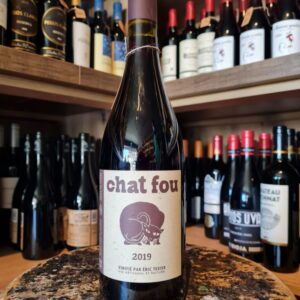 If you were ever sceptical about Organic wines, you have to give this one a try! This wine is Artisanal, Organic, Biodynamic, unfined and unfiltered. All with the aim to do as little intervention as possible and to let the Terroir speak for itself. Eric Texier Chat Fou natural red wine is a coupage of Grenache Tinta, Clairette and Marsanne, from the well known region of Côtes du Rhône.Eric Texier is a vigneron from Brézème, a municipality in the northern area of the Rhone Valley. Texier worked in nuclear engineering but switched to the world of wine in the early 1990s. He practices minimal viticulture and oenology, and attaches special importance to the management of the soils of his vineyards. The result is this superb wine a true example of natural wines and at the forefront of this movement. Eric is not a follower of fashion and speaks vehemently against those who label themselves as natural when it is used as a marketing tool rather than a true desire to understand the terroir. He believes that in most cases all natural wines taste the same! He vinifies all his wines in the same way, using as little intervention as possible to allow the terroir of his different parcels to do the talking. Hope it catches your eye!
If you were ever sceptical about Organic wines, you have to give this one a try! This wine is Artisanal, Organic, Biodynamic, unfined and unfiltered. All with the aim to do as little intervention as possible and to let the Terroir speak for itself. Eric Texier Chat Fou natural red wine is a coupage of Grenache Tinta, Clairette and Marsanne, from the well known region of Côtes du Rhône.Eric Texier is a vigneron from Brézème, a municipality in the northern area of the Rhone Valley. Texier worked in nuclear engineering but switched to the world of wine in the early 1990s. He practices minimal viticulture and oenology, and attaches special importance to the management of the soils of his vineyards. The result is this superb wine a true example of natural wines and at the forefront of this movement. Eric is not a follower of fashion and speaks vehemently against those who label themselves as natural when it is used as a marketing tool rather than a true desire to understand the terroir. He believes that in most cases all natural wines taste the same! He vinifies all his wines in the same way, using as little intervention as possible to allow the terroir of his different parcels to do the talking. Hope it catches your eye! -
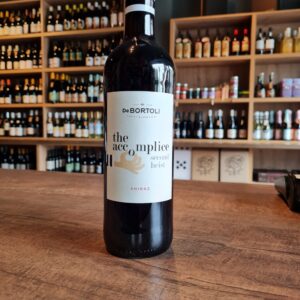 The Shiraz grapes used to craft this youthful wine were harvested in early January, which proved to be a slightly dry season. This elegant De Bortoli The Accomplice Shiraz features a dark crimson colour with ruby highlights throughout the wine. The attractive nose offers fragrances of cherry and raspberry with subtle hints of spice and musk lurking in the background. The sweet and intense palate packs juicy flavours of berry fruit combined with vanilla and nutty oak, and balanced by subtle spicy notes. This medium bodied Shiraz can be cellared for a brief term of 24 months to discover its full flavour potential. It tastes marvellous with pasta, braised pork belly and beef fajitas with salsa.Easy to drink. Enjoy!
The Shiraz grapes used to craft this youthful wine were harvested in early January, which proved to be a slightly dry season. This elegant De Bortoli The Accomplice Shiraz features a dark crimson colour with ruby highlights throughout the wine. The attractive nose offers fragrances of cherry and raspberry with subtle hints of spice and musk lurking in the background. The sweet and intense palate packs juicy flavours of berry fruit combined with vanilla and nutty oak, and balanced by subtle spicy notes. This medium bodied Shiraz can be cellared for a brief term of 24 months to discover its full flavour potential. It tastes marvellous with pasta, braised pork belly and beef fajitas with salsa.Easy to drink. Enjoy! -
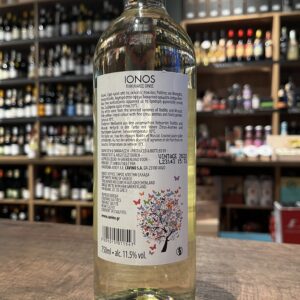
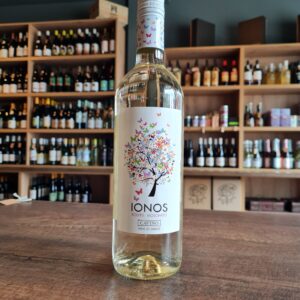 This very versatile white wine will please you with its slightly honeyed notes, its notes of exotic fruits and white fruits as well as floral notes. On the palate it is very fresh with a very refreshing acidity, a hint of citrus, flavors of exotic fruits and honey as well as a fairly persistent length. It's a charming and unpretentious everyday wine that is most satisfying. The floral acidity makes it a great summer wine for the deck or a great pairing for light summer fare; Salads and seafood.
This very versatile white wine will please you with its slightly honeyed notes, its notes of exotic fruits and white fruits as well as floral notes. On the palate it is very fresh with a very refreshing acidity, a hint of citrus, flavors of exotic fruits and honey as well as a fairly persistent length. It's a charming and unpretentious everyday wine that is most satisfying. The floral acidity makes it a great summer wine for the deck or a great pairing for light summer fare; Salads and seafood. -
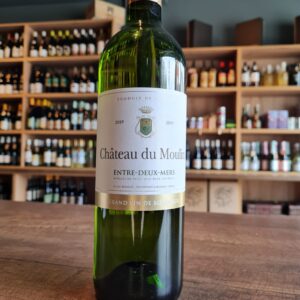 A thoroughly delightful white Bordeaux, made from a blend of Semillon, Sauvignon Blanc, and Muscadelle. Very aromatic with notes of white peach and fresh garden herbs, highlighted with bright citrus rind and mineral nuances. Easy breazy, this is lovely go-to summer wine to enjoy as an aperitif or with seafood dishes. YUM!
A thoroughly delightful white Bordeaux, made from a blend of Semillon, Sauvignon Blanc, and Muscadelle. Very aromatic with notes of white peach and fresh garden herbs, highlighted with bright citrus rind and mineral nuances. Easy breazy, this is lovely go-to summer wine to enjoy as an aperitif or with seafood dishes. YUM! -
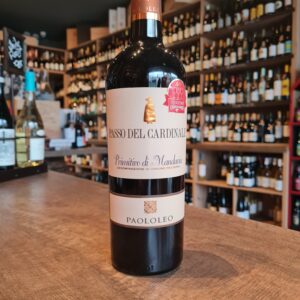 The Primitivo Paolo Leo Pass of the Cardinal is an ancient grape grape cultivated in Apulia, whose grapes present a very early maturation in comparison to other varieties, the name of which explains. One of the most interesting particularities of the Primitivo is the fact that, at a distance of only 20 days from the harvest, these grape vines are able to give a discreet second production of grapes. Traditionally, the fruits of this "second harvest" are used to increase the freshness of these ponderous wines, improving the deimosti acidity obtained from the first harvesting. The great body of the Primitivo di Manduria di Passo del Cardinale is able to enhance fine meats with a rigorous structure. Sliced beef and grilled steaks are the backdrop for a panoramic photograph. A touch of Puglia with orecchiette with chops sauce can be a gastronomic journey with which you can surprise your guests.
The Primitivo Paolo Leo Pass of the Cardinal is an ancient grape grape cultivated in Apulia, whose grapes present a very early maturation in comparison to other varieties, the name of which explains. One of the most interesting particularities of the Primitivo is the fact that, at a distance of only 20 days from the harvest, these grape vines are able to give a discreet second production of grapes. Traditionally, the fruits of this "second harvest" are used to increase the freshness of these ponderous wines, improving the deimosti acidity obtained from the first harvesting. The great body of the Primitivo di Manduria di Passo del Cardinale is able to enhance fine meats with a rigorous structure. Sliced beef and grilled steaks are the backdrop for a panoramic photograph. A touch of Puglia with orecchiette with chops sauce can be a gastronomic journey with which you can surprise your guests. -
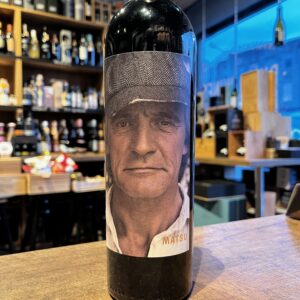 “El Recio translates as 'tough guy' and it's a clue to the style of this Tempranillo from Spain's Toro region. Made from old vines, cultivated biodynamically, the wine matures in new French oak for 14 months, giving it polish and opulence. Firm, sweet black fruit, almost fruit cake in character, with earthy and coffee notes. The guy in the picture must be a meat-eater – this wine is crying out for a juicy steak
“El Recio translates as 'tough guy' and it's a clue to the style of this Tempranillo from Spain's Toro region. Made from old vines, cultivated biodynamically, the wine matures in new French oak for 14 months, giving it polish and opulence. Firm, sweet black fruit, almost fruit cake in character, with earthy and coffee notes. The guy in the picture must be a meat-eater – this wine is crying out for a juicy steak


